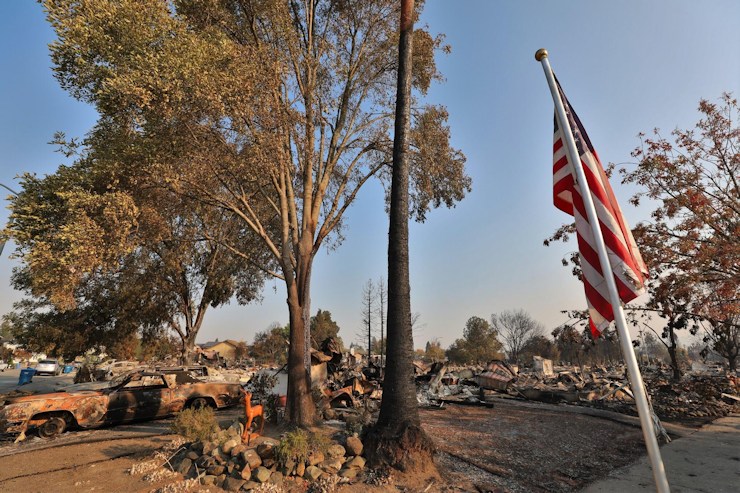
On July 18, the Sunday Chronicle published a Survival Guide Supplement chock full of helpful tips. Here are some excerpts from one article: “Tech tools can help prepare you for disaster.”
There are some free apps for your phone, numbers to text, systems to register for and technology to buy that could ensure that you have the most accurate and up to date information when disaster strikes, even during a power blackout.
To best ensure you get critical information when you most need it, it’s best to choose a diverse range of disaster preparedness technology options in case any one particular solution fails. The Federal Emergency Management Agency also reminds people that mobile networks can become overwhelmed in a crisis, and it is often easier to receive information via text than over a phone call or on an app during those times.
All of these apps are available for iOS in the Apple App Store or Android in the Google Play store unless otherwise indicated.
Free apps
MyShake: The MyShake app will send ShakeAlert earthquake warnings to enrolled Californians. The app broadcasts earthquake early warnings issued by the state’s ShakeAlert system, which uses a network of earthquake detectors to provide seconds of early warning of a quake. Android phone users will receive the ShakeAlert warnings regardless of whether they have downloaded the app because of a partnership between Google and the Governor’s Office of Emergency Services.
FEMA Mobile: The federal disaster relief agency’s official app will allow you to set weather alerts from the National Weather Service for up to five locations within the United States, which provide information about wildfire risks, dangerous storms and heat waves. You can also share emergency alerts, prepare a disaster checklist and learn preparedness tips. The app is also available in Spanish.
American Red Cross: The nonprofit provides a number of free emergency alert apps for download, including an all-inclusive Emergency app and one specifically for earthquakes. Other apps also include one called First Aid, which provides information if you need to render first aid.
Zello: This app can turn your phone into a walkie talkie, allowing you and anyone else with the app to communicate via short audio messages. It can be a helpful way to stay connected to others during an emergency, or to make quick contact with separated family members.
50 Radio Police Scanner: You can listen to live police scanners using this free app, including San Francisco’s City Police Dispatch and San Francisco fire and emergency medical services. Police scanners can sometimes provide useful information during natural disasters.
Phone and email
You can register your phone and email address for location specific alerts with local and federal government sources.
If you text “PREPARE” to 43362, your phone number will be signed up for FEMA text alerts and emergency preparedness tips. Save the number 43362 in your contacts. If you text this number with the word “SHELTER” and your ZIP code, you can find open shelters.
For most Bay Area counties, you can sign up for local government and public safety alerts, including emergency warnings, via Nixle by texting your ZIP code to 888777.
You can also fill out an online registration form to receive alerts via phone or email for some Bay Area counties. Search your local county government website for information on signing up in Marin, San Mateo, Santa Clara, Sonoma and Solano counties.
You can also receive useful information from emergency alerts shared on county and other government Twitter accounts. Marin: @AlertMarin, @MarinSheriff.
Wireless Emergency Alerts
Federal agencies like the National Weather Service and local governments use a system called Wireless Emergency Alerts (WEA) to communicate with most cell phones. The alerts are usually accompanied by a sound and vibration pattern so that users can identify their importance.
But in areas with poor or no cell phone service, the alerts may be critically delayed or not arrive. Some people have reported that they did not receive essential emergency alerts when they were supposed to. Other apps and messaging systems that rely on WiFi and data plans may help fill in the gaps left by the wireless emergency alert system.
The federal Emergency Alert System (EAS) is a separate system that uses broadcasters and satellite providers to broadcast emergency warnings to television and radio. If you cannot access cell service or the internet, turning on a radio or television during an emergency may help you get the critical information you need. Both the WEA and the EAS are part of the Integrated Public Alert and Warning System, which also uses digital road signs and sirens as alternative alerting mechanisms.
Key hardware
FEMA and the California Governor’s Office of Emergency Services recommend that families have an emergency charging option for cell phones in the case of a power failure. Be sure to keep at least one backup portable charger in your emergency preparedness kit.
Most state and local emergency preparedness lists recommend finding a battery powered or hand-crank radio so that you can get information if you cannot access the internet or any cell based technologies. Some lists also recommend extra batteries and a portable drive or cloud based storage with scans of important documents, like insurance information.
If cell and internet networks are knocked out during a natural disaster, satellite phones can be an option to stay in touch because they rely on a network of satellites unaffected by natural disasters.
Though expensive, there are a few satellite phones commonly recommended for emergency use, including the Inmarsat IsatPhone 2 and the Iridium 9555. Some retailers have offered the Inmarsat for free alongside a yearly plan, and it may be worth exploring if you’re willing to spend $50 to $100 a year to keep a satellite phone active for emergencies.
In the coming weeks, we’ll excerpt other articles with relevance to the floating homes community.